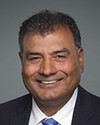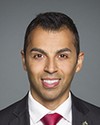There are a lot of ways that I could answer that question, and there's so much information we could give. It will be part of the lessons learned report that will be provided later in the fall.
Certainly, there was a large challenge in the overseas environment and ramping up to be able to process that number of people that quickly, working with our partners in the UNHCR to find a new way of identifying refugees to come forward as government-assisted or blended, and also working with the International Organization for Migration to move that number of people that quickly. There were many challenges along the way in the overseas environment in terms of getting staff organized and trained. There were national defence officials on site to help do administrative work as well as the medical examinations. There's that piece.
We also learned, throughout the course of the operation, that there could never be enough communication with all the partners that we were working with, with municipalities, provinces, and territories, and with our services-led organizations. We communicated as much as we could, but there were certainly instances where, had we had more time and even less sleep than we actually had, we would have been communicating even more, because more information helped us all make better plans together.
I don't know, David, if you want to add to that.




